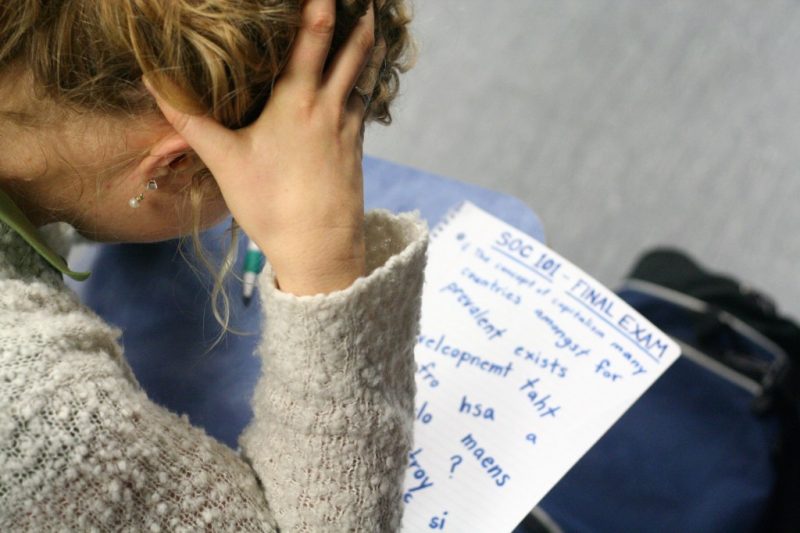The Physical tolls of stress


Stress is experienced by everyone on a variety of levels due to many different reasons. It is no secret that stress is uncomfortable and triggers many health issues. I argue that it is becoming increasingly worse for students to manage, and the physical tolls of stress are not fully realized by young adults.
Ironically, our body’s response to external stressors is to protect us and keep us safe in every basic biological way.
In temporary situations, it can be extremely useful to have stress, fear, and adrenaline propelling us forward to stay safe. Many students would agree with this when they begin writing their final paper the night before it’s due, and claim they work better under pressure.
When the effects of stress are drawn out, the real problems begin to occur.
You may have heard the expression “fight or flight” in connection to how the human brain works. This expression refers to the part of our brain named the hypothalamus which controls the release of hormones such as adrenaline and cortisol. The release of these hormones quickens your heartbeat and sends blood rushing to areas of the body that would need it most in emergencies.
Symptoms of stress usually fall under four categories: emotional, physical, cognitive, and behavioural.
Common physical impairments from stress include: headaches, increased depression, insomnia, rapid breathing, weakened immune system, stomach ache, fatigue, low libido, and grinding or clenching of your teeth.
Stress can affect student’s lives in specific ways as well, such as the inability to concentrate in classes, irritability towards friends and family, and unhealthy eating habits. Some react by not eating at all or by binging food as a desperate attempt for temporary comfort.
There has been a continuous association between stress and students. The workload and expectations put on by post-secondary education are high, but it is nothing compared to the expectations that students put on themselves.
Throughout the COVID-19 pandemic, students have been torn between fulfilling their normal responsibilities or changing their levels of productivity to accommodate their well-being.
When symptoms of stress are experienced over long periods, it is considered to be chronic stress, leading to long-term side effects and issues later in life. When determining the risks of stress, the psychological response is to think not me, not here, not now. I would argue you should challenge these thoughts and ask, if not me, then who? Where? When? It is too easy to disregard a risk simply because you convince yourself you have time, and it will only affect other people, never you.
The next time you experience trouble sleeping, bloating, change in appetite or even find yourself getting sick more often than usual, it may be a result of your stress levels not being maintained healthily. People tend to write off stress as something inevitable and out of their control as well as being too hard to combat.
It seems daunting to prioritize yourself over homework when living in a Western-capitalist society that rewards productivity and results over anything else. The way people think about stress and it’s direct physical consequences needs to change so that individuals are not learning healthy coping mechanisms 20 years too late.
Chronic stress and its physical tolls are not feared in the same way as cancer or heart disease, yet according to The American Institute of Stress, 77% of people experience stress that affects their physical health.
Why is this statistic not as scary to hear? It’s scarier when framed around mental health problems, cardiovascular disease, obesity, menstrual problems, eczema, gastrointestinal problems, and hair loss.
Make the time to do the small things that help you manage stress in the present to live better in the future. In reality, it is probably not happening to someone else, somewhere else or some other time. It’s happening a little bit every day from every direction.


